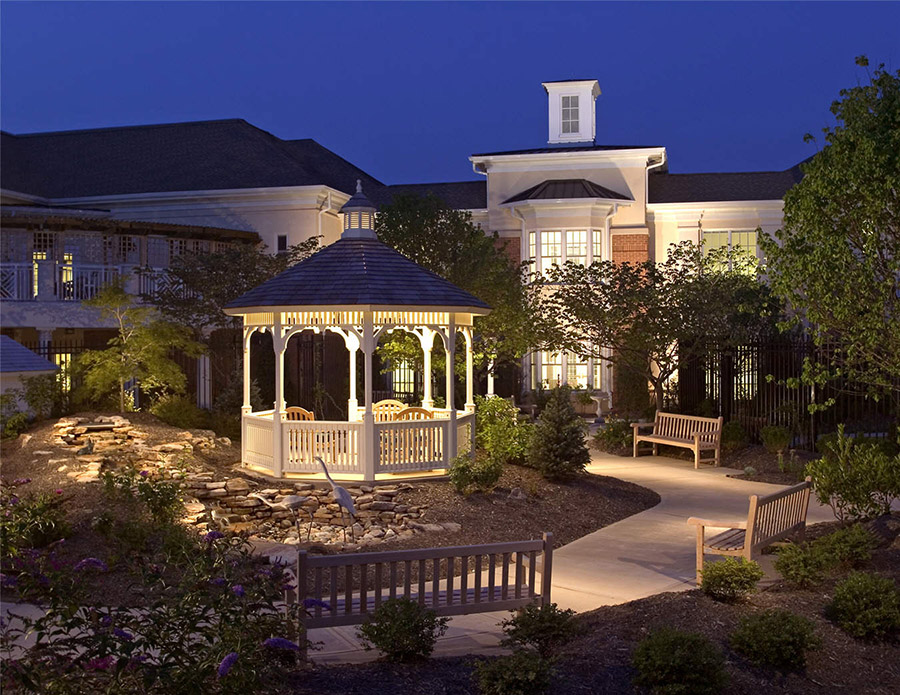The News at THW
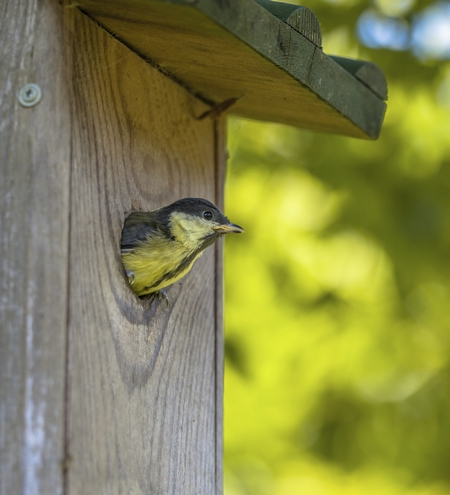
5 Considerations for Memory Gardens
In his book, Biophilia, Edward O. Wilson put forth the hypothesis that there is an instinctive bond between people and other living things. Building upon that idea, it’s logical that the natural environment can be a therapeutic place for healing and rehabilitation. Historically speaking, the use of gardens as places for healing and rejuvenation is nothing new.
Although ancient cultures the world over drew strength and sustenance from the natural environments, some civilizations are looked to as innovators in healing garden design. By recreating (or at least symbolizing) elements from the natural world within the built environment, more seniors could benefit from the mental restoration found in natural settings. Memory care and Alzheimer’s gardens are often enclosed to provide a sense of security. They feature wide, level pathways or labyrinths, non-glare surfaces, social spaces, and benches where patients can rest. Familiar features like wind chimes, clotheslines and birdbaths are often present. Knowledgeable landscape architects choose plants that trigger positive emotions from a person’s past, such as old-fashioned hollyhocks, lavender or lilacs while avoiding poisonous varieties. In this article we will consider 5 elements that should be incorporated into comprehensive memory care gardens, based on our own research. Each element provides important facet to wellness and quality of life.
1. RESIDENT GARDENS
Studies of a skilled care home show that in an environment where residents were involved with community gardening, there was a 15% decrease in deaths compared to the resident group that did not have this benefit. The cycle of planting, nurturing, harvesting, cooking and eating what they grow encourages group participation, stimulates memory, inspires personal expression, while reinforcing a cyclical understanding of something familiar to the older adult, such as seasons and time of day. When individuals understand that they are also accountable to this natural life, their desire to better manage their own health may increase.
The flora within the garden should be non-toxic and without thorns or spines. In areas where residents are sure to come into contact with the vegetation, special consideration must be given to the texture of the plants themselves. Strategically placed, raised planters ensure that contact occurs. Bright colors or pleasant aromas of flowers as well as sounds from wind chimes or water features engage a resident’s senses or bring back fond memories.
Other important pieces in the design of the garden are walking surfaces that allow someone with mobility limitations to move about as freely as possible. A circuitous path without dead ends is preferable for measuring mobility goals, as well as creating less confusion for residents with dementia. Clear visual cues should mark entrances and gathering areas for residents of all abilities.
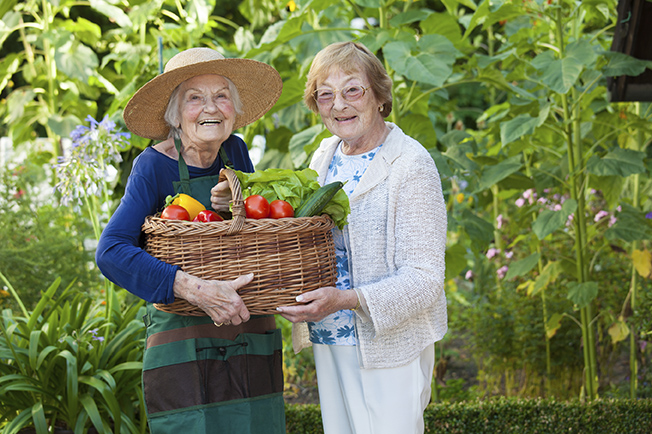
2. BUTTERFLY GARDENS
While the main element of a therapeutic garden is the plants themselves, the wildlife they attract are a key element as well. The presence of life in the garden can only help accelerate recovery times. Butterflies can be very therapeutic and are seen by some as a symbol of tranquility and peace. They can empower memory care patients to experience calm, peace and comfort. Research suggests that familiar sights, like butterflies, can evoke buried memories and recollections of loved ones.
Careful consideration must be given to select flowering plants that are minimally attractive to bees and other stinging insects. Plants with red flowers, strong scents, or those that bloom at night are less likely to attract them. Consider feeder plants like parsley, mint and tall grasses that butterflies use to nest and feed. Include flowering perennials, small decorative butterfly houses mounted on posts and wind chimes.
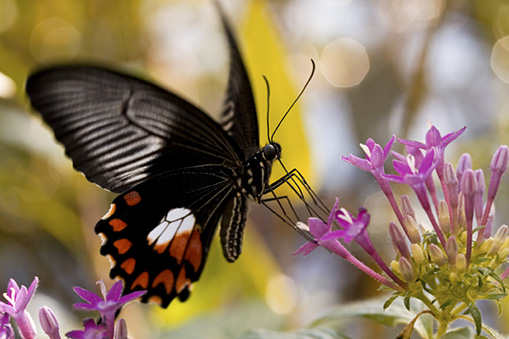
3. BIRD GARDENS
There are a number of ways to attract birds to your garden, from planting native plants to providing safe stopover areas for them to eat, drink and nest. Bird gardens typically include the following: a recirculating bird bath to wash under such as a pedestal bird bath or ground level rock bath, feeders hung from trees or mounted on posts and plant material that produce ground cover and nesting areas for birds to live and feed (ie grasses, plants with fruits, berries etc). Consider placing many birdhouses in the garden as decorative features to add color and texture. Do not use a box with a perch, as sparrows are known to sit on a nesting box perch and peck at other birds using the nesting box.
4. WATER ELEMENTS
Water features can be a polarizing issue in health care for both indoor and outdoor water features due to health and safety risks. However, when designed and installed correctly, a water element is a wonderful distraction with proven stress reduction benefits. Nothing induces a more calming effect as does watching the movement of water. There is limited research on the specific effects of water features, but one study of 12 elderly dementia patients found that mean systolic blood pressure rates dropped from 127 to 123 with a water feature present. Natural sounds are best for mood and meditation and a fountain can also mask other unpleasant sounds in the environment.
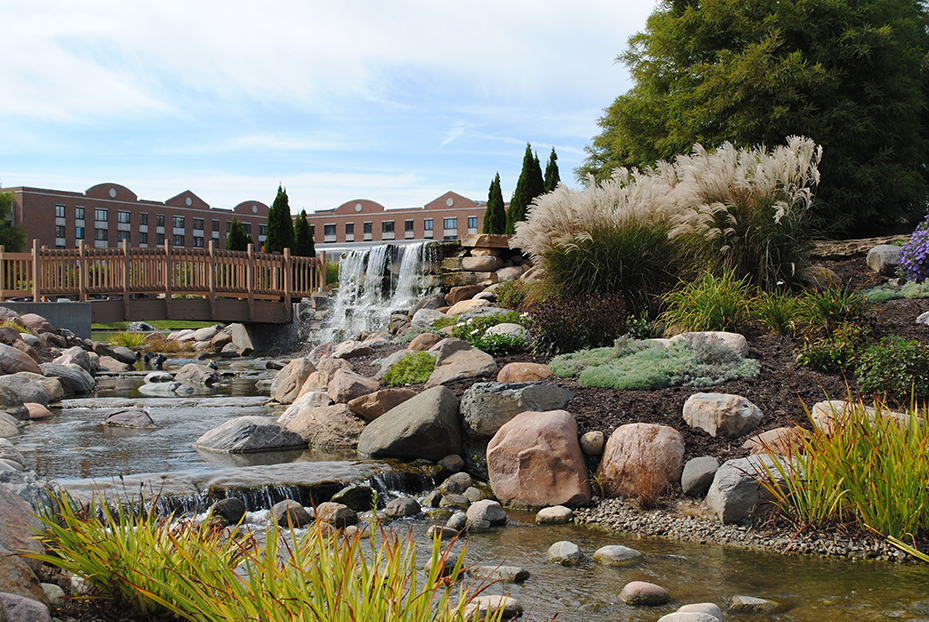
5. GATHERING SPACES
Comfortable seating areas for both intimate and large groups should feature appropriate seat, back, and arm rest heights for ease of use. Sensible placement of areas of sun and shade ensure the garden can be enjoyed throughout every season. Shade is particularly important for some who take medication that make them more sensitive to sun. Comprehensive memory garden design provides many physical benefits and offers a non-pharmacological approach to wellness including sleep improvement, absorption of Vitamin D needed to maintain strong bones, therapeutic fresh air, lower blood pressure, distraction from pain, and contribute to weightloss.
At The Gables, a memory support residence at Westminster Canterbury Richmond in Richmond, VA we implemented a garden that successfully incorporates each of these elements. Each neighborhood of residents has its own secured outdoor space that connects to a larger community space, anchored by a central water feature. At THW Design, our landscape architects and land planners create meaningful outdoor spaces for all to enjoy. Our design philosophy has been shaped and molded by the research of leading healthcare experts, gerontological thought leaders, and by our own experience of over 25 years of creating senior living environments. While the spaces we create are meant to be enjoyed by all, we take great care in ensuring these are therapeutic and healing environments.
